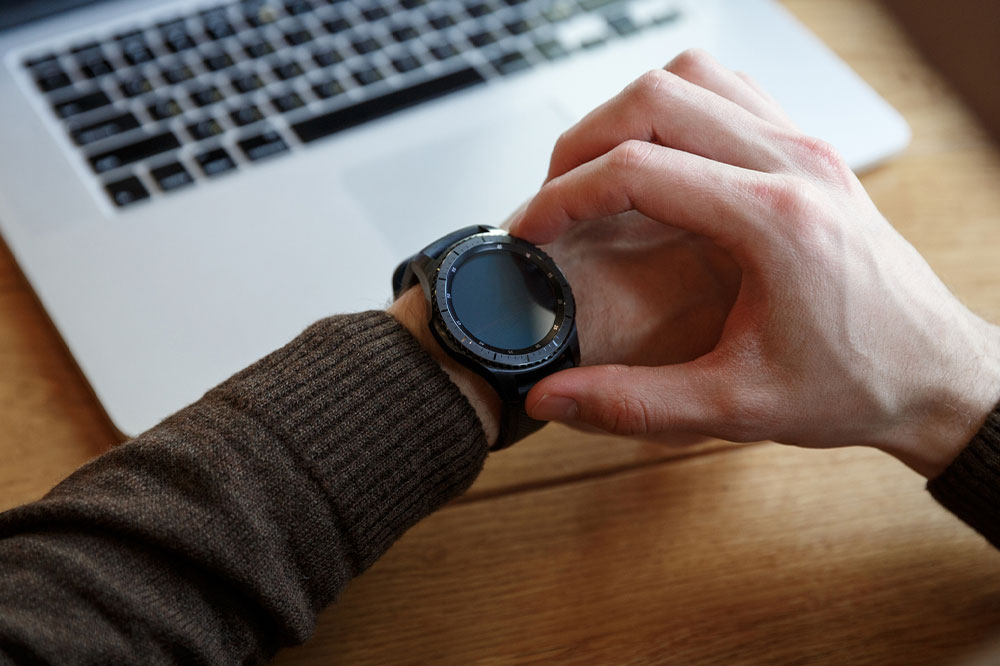
5 ways to effectively use a smartwatch
Smart gadgets have become a necessity rather than a luxury, and the market is now booming with advanced versions of a new gadget—smartwatches. While they have been around for a couple of years, smartwatch technology has taken a leap forward. Watches are no longer just a tool to tell the time; they can collect data, access the internet, and share insights about the world and your health. Here are ways in which you can use smartwatches:
Take notes
This may be surprising, considering the smartwatch screen is tiny, but taking notes doesn’t always mean you need to type them, does it? Many smartwatches come with an audio-to-text feature that is convenient, effective, and extremely easy to use. This is especially useful if your hands are busy and you cannot stop to write down a brilliant idea. You can simply dictate it to your smartwatch, and the device will add the text to your notes. This can also come in handy if you are commuting and would not like to whip out your notepad or phone for some quick, innovative ideas, say, for a presentation.
Use as a fitness tracker
Your smartwatch is more than a pedometer that tracks your steps every day. There are several more sophisticated functions added to these gadgets that can make your fitness journey trackable and more convenient. You can monitor your heart rate, oxygen levels, calories burnt, sleep cycle, and many other activities. The sleep tracker is especially helpful in understanding how your body functions and when it gets the most sleep, so it can offer data on your deep sleep period. Accordingly, you can adjust your routine and lifestyle to ensure you are making healthy choices. Once you see the data your smartwatch collected, you can evaluate your progress and adopt better fitness habits.
Get on calls
Another convenient feature of smartwatches is that you can take calls or read messages with just a tap. If you are exercising or working on something and do not have your phone on you but have your earphones, you can easily pick up calls on the go. You do not have to miss important calls if you have left your phone in another room or simply can’t find it at a crucial moment. However, remember to pair your smartwatch with the phone to take advantage of this feature.
Set reminders
An easy way to keep a to-do list handy is to have it on your wrist. As a smartwatch is also a fitness and sleep tracker, you can wear it at night. You can use it to set up an alarm on your watch, and it will wake you up as it vibrates on your wrist. This also helps you avoid awfully loud alarm noises in the morning. As you get ready, simply dictate things you need to remember for the day to your smartwatch, and it will set them as reminders. All you have to do now is get reminders and check the tasks off your list without using your phone or laptop. Easy, isn’t it?
Stay updated
You can get all your notifications on your smartwatch, and if you want just the headlines and news snippets, this is the easiest way to do so. You can look at news updates and notifications about calls, messages, apps, and appointments by raising your wrist and getting a glimpse of all the updates.
Several smartwatches in the market can offer these features. For instance, unveiled at the Far Out event by Apple, the Apple Watch Series 8 is one of the most sought-after smartwatches. While it was available for pre-order through online stores earlier, the smartwatch went on sale on September 16, 2022. This crack-, dust-, and water-resistant gadget has exceptional looks, design, and tech. The starting price for the GPS-only version is $399, and the cellular version with GPS costs $499. The Apple Watch Series 8’s body temperature sensing helps you track ovulation and the menstrual cycle. Its sleep app tracks data like REM sleep and core and deep sleep to help you improve your sleeping habits. Additionally, the new crash detection feature connects you to your family and emergency services in an accident.


